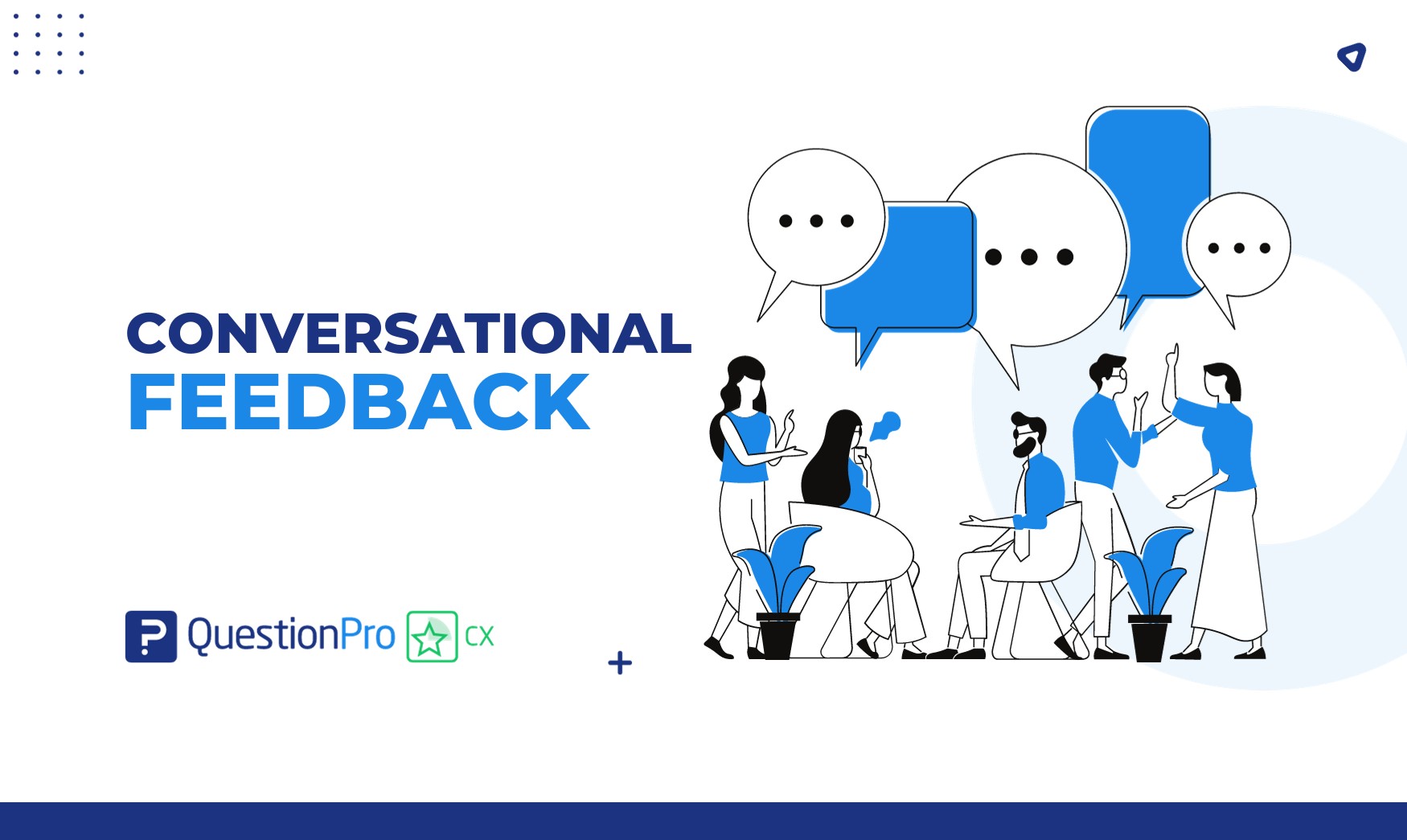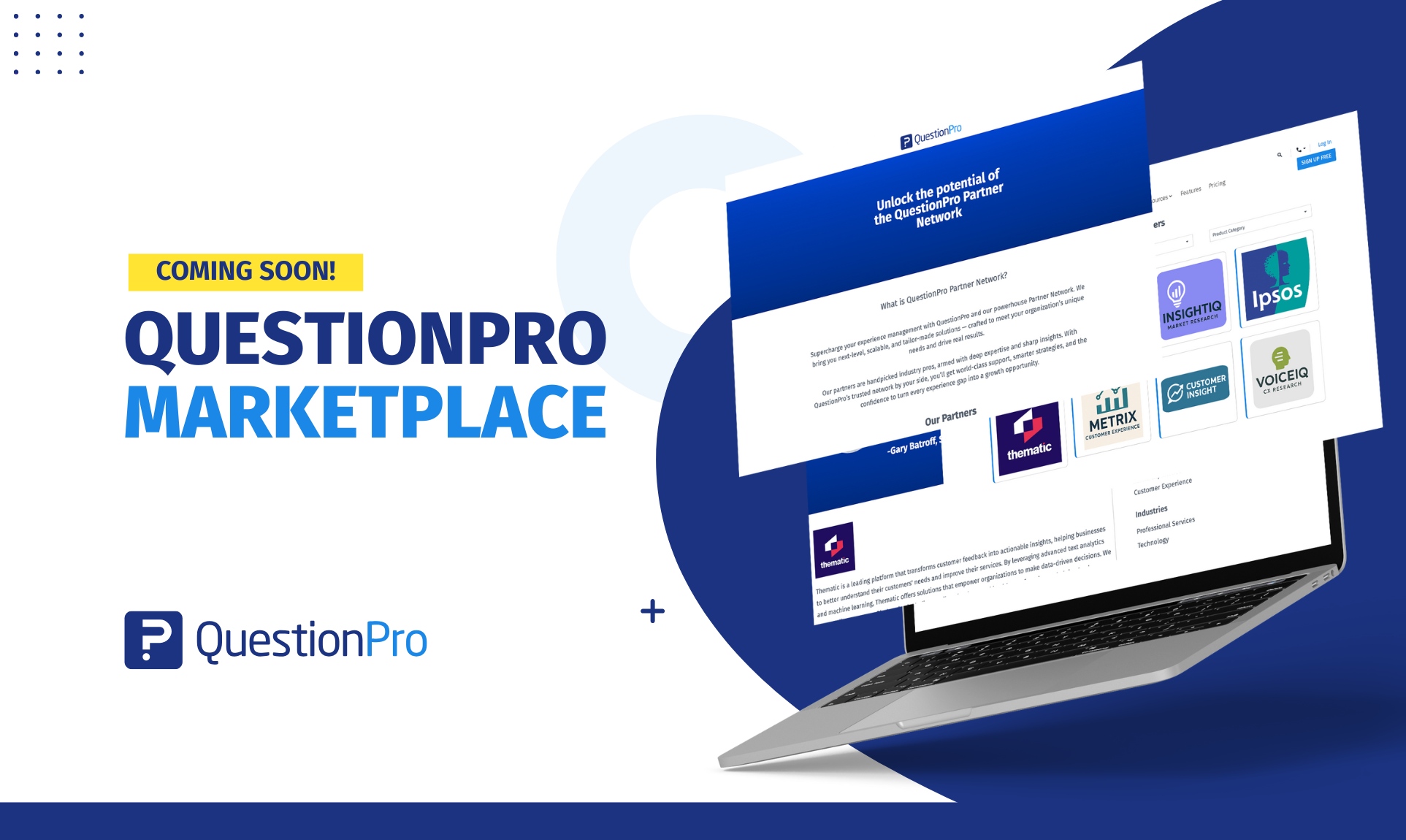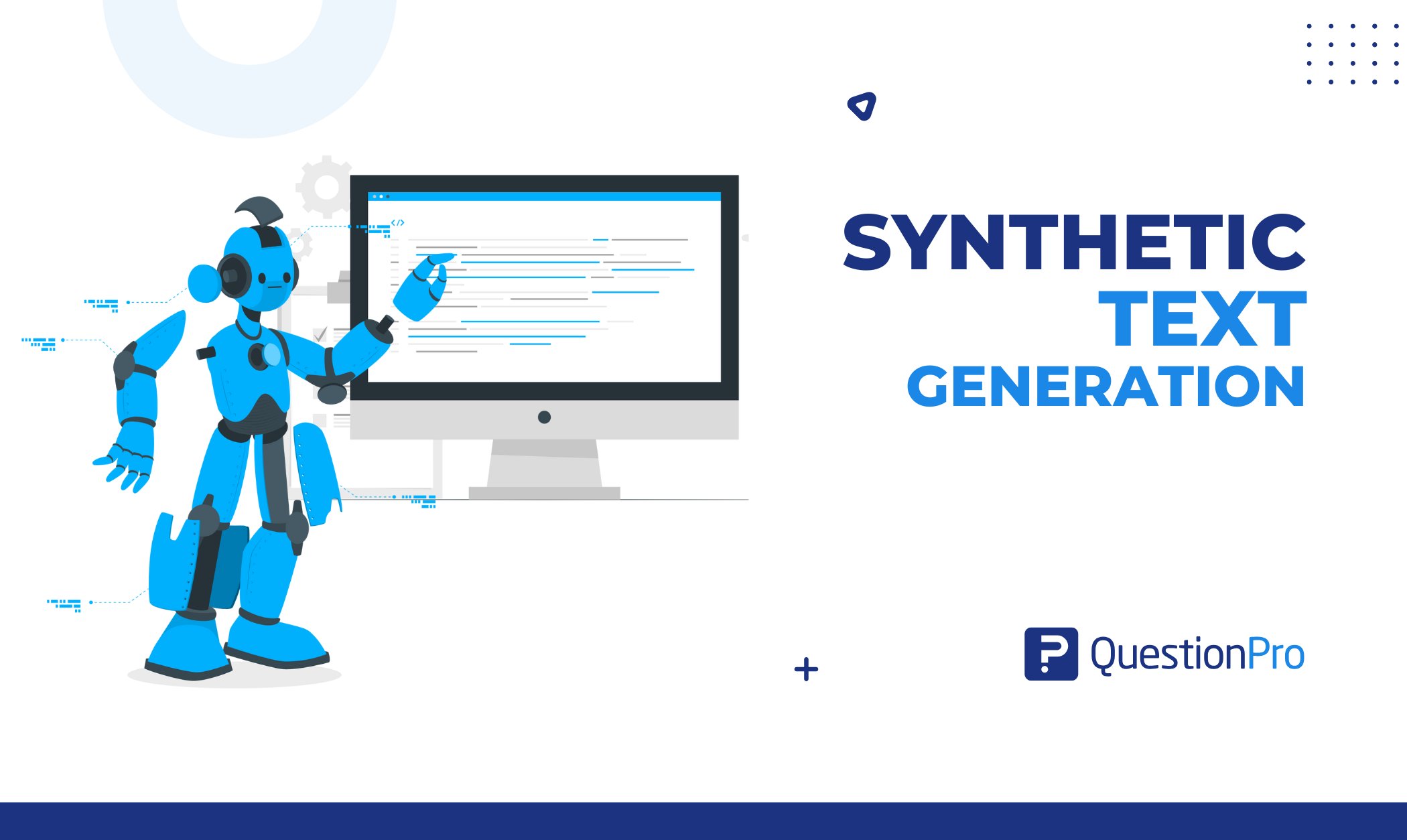
Having conversations with customers and employees is a friendly way to learn what they think. Unlike formal quizzes, this conversational feedback feels like casual chat, making it easy for respondents to share their thoughts openly.
This approach works well online, like in emails, social media, and web pages. It can also be successful in person if the feedback form is well-made.
In this blog, we’ll talk about conversational feedback—what it is, list its advantages and difficulties, and share tips on how to do it effectively.
What is Conversational Feedback?
Conversational feedback refers to customer opinions shared through chats or direct messages. It’s a helpful method for gathering feedback because you can ask customers specific questions about their thoughts.
Conversational surveys gather feedback from customers or employees in a casual chat instead of a formal questionnaire.
Instead of making it feel like an intense interview, you can just ask questions like you would in a normal conversation. This makes people feel at ease and encourages them to give truthful feedback.
Because of their interactive style, these surveys are great for digital places like email, social media, or landing pages. But it’s worth noting that a well-designed conversational feedback form can work just as well in face-to-face situations.
Essential Elements of Effective Conversational Feedback
Effective conversational feedback is improved by various important elements that encourage active participation and genuine interaction. Here are the key elements:
01. Open Communication Environment
Creating an open and inclusive atmosphere is crucial for meaningful conversation feedback. When people feel at ease and encouraged, they’re more likely to share their thoughts and ideas openly. To establish an open communication:
- Create a supportive atmosphere for open dialogue.
- Encourage people to share without fear of judgment.
- Use inclusive language and avoid technical terms.
02. Thoughtful Questioning
Asking thoughtful questions is important for getting valuable insights during conversations. To do this:
- Ask relevant, open-ended questions.
- Seek detailed answers for deeper insights.
- Focus questions on specific experiences and opinions.
03. Active Listening
Active listening is a crucial part of giving good feedback in a conversation. When you actively listen, you show respect and improve the feedback by understanding what others say.
- Engage in active listening for a genuine conversation.
- Show respect by understanding participants’ responses.
- Use cues like acknowledgment and clarification.
04. Real-Time Interaction
Real-time interaction is a dynamic aspect of conversational feedback that contributes to its effectiveness. It keeps the conversation flowing smoothly and avoids delays in communication.
- Foster dynamic discussions with quick, timely responses.
- Utilize platforms for instant communication.
- Maintain a lively exchange of ideas.
05. Constructive Feedback Loop
Creating a helpful feedback system is crucial for getting better over time. It’s not just about gathering feedback; it’s about using it to make practical improvements. To do this:
- Establish a feedback loop for continuous improvement.
- Explain how feedback will be used for concrete enhancements.
- Demonstrate a commitment to ongoing improvement.
06. Clarity and Transparency
Clear and open communication is essential for building trust in feedback during conversations. So:
- Foster trust through open and honest communication.
- Clearly explain the purpose and benefits of feedback.
- Provide details about the feedback process for context and significance.
Types of Conversational Feedback
Different forms of conversational feedback play distinct roles in promoting communication and comprehension. Let’s explore some important types:
01. Positive Feedback
Appreciative or positive feedback is a way to show thanks and admiration for someone’s work or actions. It emphasizes the good parts of what they’ve done and encourages them to keep up the good work.
For example, “Your dedication to the project has not gone unnoticed. Thank you for your hard work and commitment to excellence. Keep up the great effort!”
02. Constructive Criticism
Constructive criticism is a kind of conversational feedback that gives helpful suggestions for improvement. It points out specific aspects of behavior or performance that can be improved and offers practical recommendations for positive change.
For example, if someone says, “Your presentation was good, try adding more visuals to keep the audience engaged.” This change could make a bigger impact overall.
03. Evaluative Feedback
Evaluative feedback formally assesses how well someone has done or behaved. It might include ratings or scores based on specific factors, providing a structured evaluation.
For example: “You did great on the project. I assessed your work using different criteria, and your dedication and carefulness really stood out.”
04. Coaching Feedback
Coaching feedback is designed to assist individuals in reaching specific goals by offering guidance and support. It is a helpful type of feedback that promotes skill development and motivates actions leading to success.
For example, “To achieve your career goals, enhance your leadership skills. I will offer guidance and support to help you succeed in this area.”
05. Improvement Feedback
Improvement feedback is given when there are issues in behavior or performance. It’s needed when someone doesn’t meet expectations, helping them make necessary changes for the better.
For example, “The recent work you submitted didn’t meet the standards. Let’s discuss the areas needing improvement and collaborate to fix them.”
06. Thoughtful Feedback
Thoughtful feedback encourages people to think about their actions and behavior. It includes asking questions that encourage self-reflection, helping individuals better understand their choices and decisions.
For example, “Consider how you handled the meeting. What went smoothly, and what could be done better? Reflecting on these things can improve future interactions.”
Benefits of Providing Conversational Feedback
Conversational feedback has many advantages for organizations, providing valuable insights and promoting meaningful interactions. Let’s explore the key benefits:
- Promotes Honest Communication: Conversational feedback benefits organizations by obtaining genuine feedback to understand feelings and perspectives better.
- Strengthens Customer Relationships: Talking to your customers and getting their feedback helps you connect with them and maintain your relationship.
- Enhances Understanding of Customer Needs: Engaging in conversations about feedback helps organizations fully grasp what customers or employees require, making it easier to focus on specific improvements.
- Demonstrates Responsiveness to Customer Needs: Conversational feedback forms reflect a dedication to ongoing improvement, reassuring customers that their input is important and being considered.
- Increases Engagement and Participation: Conversational feedback increases participation rates, as people are more likely to actively join conversations, resulting in better and more abundant feedback.
Challenges of Conversational Feedback
Although conversational feedback has many advantages, it comes with its own set of difficulties. Overcoming these challenges is essential for organizations that want to make the most of this interactive feedback method. Let’s look at some important challenges:
- Organizations may find it difficult to handle time, resources, and individuals for personalized conversations, which can affect how easily they can expand.
- Conversational feedback carries the risk of discussions going off track from the intended focus or goals.
- Successful implementation relies on the ability to listen effectively and interpret nuanced responses.
- Creating conversational feedback forms for conversations needs a thoughtful approach to grasp and address the worries and viewpoints of participants.
- Users need good logical reasoning skills to create questions that work well.
- Gathering feedback through conversations could lead to worries about privacy and security, especially when dealing with sensitive information.
The Impact of Conversational Feedback on Employee Engagement
Talking to employees and giving them feedback is a great way to keep them engaged at work. However, sometimes, leaders don’t give employees enough specific feedback, which can make it less effective.
Employees who do well but aren’t recognized might not know if they are doing a good job. Also, employees won’t know what to change if leaders don’t clearly say what needs improvement.
When people get general praise for doing well, they might not know exactly what they did right or how to do it again. On the other hand, unclear suggestions for improvement can be hard to understand, making it difficult for people to know exactly what they need to do better.
Repetition is also crucial for turning feedback into action. When feedback is given conversationally and interactively, it helps reinforce the message, making it more likely to lead to meaningful changes in behavior.
Improving Conversational Feedback with QuestionPro
QuestionPro is an online survey and feedback platform. It can play a crucial role in facilitating conversational feedback in various contexts. Here’s how QuestionPro can be utilized:
- Interactive Survey Design: Questionpro helps you create surveys that are like real conversations, interactive and dynamic. With options such as branching logic and dynamic content, you can create surveys that feel natural and encourage people to participate.
- Real-time Feedback Collection: The platform supports real-time feedback collection through various channels, such as web surveys, mobile surveys, and email surveys. This helps you gather feedback quickly, making conversations more immediate and relevant.
- Personalized Feedback Paths: QuestionPro allows you to create personalized feedback paths using advanced logic and customization features. It helps you personalize questions that align with earlier responses, which resembles a personalized conversation.
- Multi-Channel Feedback Integration: QuestionPro helps bring together feedback from different sources like social media, websites, and in-person interactions. This inclusive method makes sure that you can collect feedback from various places and conversations.
- Sentiment Analysis: QuestionPro sentiment analysis tools can help you interpret the emotional tone of responses. This helps to understand the sentiment in conversational feedback and provides more insights into how respondents feel.
- Integration with Collaboration Tools: QuestionPro lets you connect with collaboration tools to share feedback insights easily. This encourages teamwork and actions based on the feedback received in conversations.
Conclusion
Conversational feedback requires being clear and precise about certain topics. When discussing feedback, the main goal should be to help people improve or reach their goals. This means not just identifying areas for improvement but also offering positive suggestions for personal and professional development.
Setting up conversational feedback surveys requires attention to time limitations, especially when dealing with a large number of responses. Achieving a proper balance in interactive customer feedback conversations can be challenging, as there is a notable risk of discussions straying from the intended focus or goals.
It’s important for organizations to handle challenges. Even though there are significant advantages, dealing with the complexities of interactive feedback, like conversational surveys and regular feedback conversations, requires careful planning for organizations aiming to get the most out of this dynamic approach.
QuestionPro helps organizations gather feedback in a conversational manner, making it a powerful tool for boosting engagement and obtaining valuable insights for continuous improvement.







